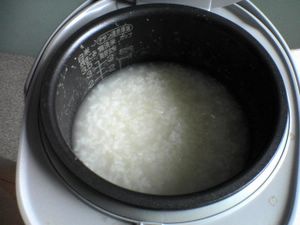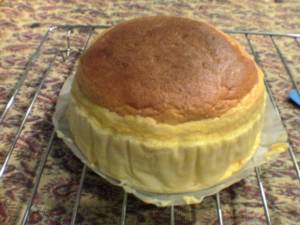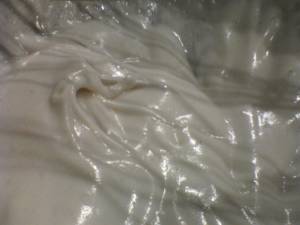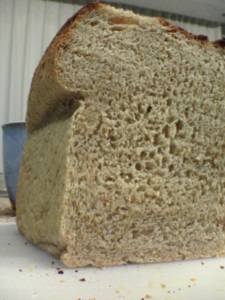Cold Comfort

Look familiar?
Nestled in that spoon is what is known as okayu in Japanese, tchok in some dialect(s) of Chinese, and...rice porridge in English--this last I never use because, for me at least, the word "porridge" conjures up something thick and glutinous, nothing that could apply here.
I caught a cold recently. I'm almost fine now, except for a lingering cough and a weird swollen throat that makes eating almost impossible, damn it. But even during my grave illness, I thought of this blog. I had no desire to actually write anything but I thought about it. After the fever broke and my regular appetite returned (nothing keeps this stomach down for long), as I was about to have a warm bowl of okayu, I thought, Hmm, this might be something interesting and informative to write about.
In Japan, okayu tends to be thought of as food for sick people because it's essentially rice that has been boiled in lots of water until soft and, hence, it's easy to digest. From what I've seen, it's usually eaten with a bit of fish, pickles, or ume boshi, which is a Japanese apricot that has been mascerated for months in salt, until the flesh is reduced to a meltingly soft consistently tenuously held together by a paper-thin skin.
As a child in Singapore, when I was ill I was given tchok, usually with a wedge of salted goose egg--I would painstakingly spoon out the impossibly white, chalky flesh, which clings stubbornly to the shell, and leave the red-orange yolk behind. But we ate tchok all the time, even when we were happy and healthy. Tchok is good stuff and there are so many kinds.
A Few Kinds of Tchok:
1. Plain tchok - this is the kind you'll get when you're sick, but it's better when you're not because then you get to enjoy it with the full spread of condiments and side dishes. Plain tchok is amazing because of how sweet and clean it tastes. It's warm and comforting, yet very light. I think my favorite thing to eat with plain tchok is a pickle called kiam chye, preferably julienned and stir-fried with thinly sliced pork. And a great condiment to sparingly spoon over plain tchok is cured black olives in oil--this is very different from your regular Kalamata olives and I have no idea where they originated from (but I promise to do a little more research and add more links to this post when I'm feeling better).
2. Chicken tchok - as an alternative to plain, tchok can be cooked together with other ingredients to simplify things (like a one-pot meal), but at our house it was invariably shredded ginger, black peppercorns, chicken broth, and big pieces of chicken.
3. Teochew tchok - this is just like plain except that it's a lot thinner, and the rice is only *just* cooked, so each grain is still separate and fairly firm--anyone ever had chicken and rice soup? Kinda like that. If you're in Singapore, when picking side dishes, you have to have the simmered goose with firm tofu (which has absorbed a lot of the dark sauce)--O dear lord, that stuff is HEAVEN!
4. Hong Kong style - I don't really know what the name of this tchok is, but it always seems to be served at Cantonese restaurants. I consider it "deluxe" tchok cause I've never had it home made. Instead of water, this tchok is simmered in some kind of stock, and it usually comes with its own "goodies"--usually nice things like sliced abalone or fish--so you don't need side dishes. I don't know how they do this but the tchok comes out beautifully--smooth and creamy (you can't even tell that it's rice anymore) but still light.
This past week, I've pretty much stuck to plain tchok. Call it early conditioning, but tchok is what I crave when I'm sick. It's comfort food without the usual heaviness of comfort food, and my rice cooker actually does all the work so I don't have to weave unsteadily around hot stoves and pots and pans, and be even more of a kitchen hazard than usual.

Especially the first day, I wanted something very simple--so, tchok and convenience store pickles (tip: don't ever buy pickles from Japanese convenience store):

For another meal, I heated up some tchok with a beaten egg, and then topped the whole thing with ume boshi:

At the risk of grossing you all out, here's a picture of everything mixed together. You have to kind of mash the ume boshi because it's very salty and needs to be evenly distributed. The black bits are actually purple shiso, or perilla, leaves that are cured with the ume boshi and which smell divine.

That's about it. Sorry, I'm not terribly inspired when my head's all fuzzy.
Oh, I just realized I don't have a recipe (for those who don't have a tchok-cooking setting on their rice cooker). I hate to sound like my mom but you don't really need exact measurements for making tchok. I guess it's good to know that a little rice goes a long way. Usually, I'd say a single portion of tchok only needs about a quarter cup of rice. As for water, I just did a quick search for recipes and the first one I found says "1 cup of rice, 6 1/2 cups water/broth." If anyone has a more confident formula, please feel free to comment!
If I'm making a small portion of tchok in a pot, usually it goes something like: put rice and cold water in pot, bring water to boil, turn heat to low, simmer with lid only partially covering pot (I stick a chopstick under the lid so it doesn't close tight and cause the tchok to bubble over, which is a common problem) for about an hour, stirring occasionally--although the timing does vary, depending on how soft you like your rice.
[more]















